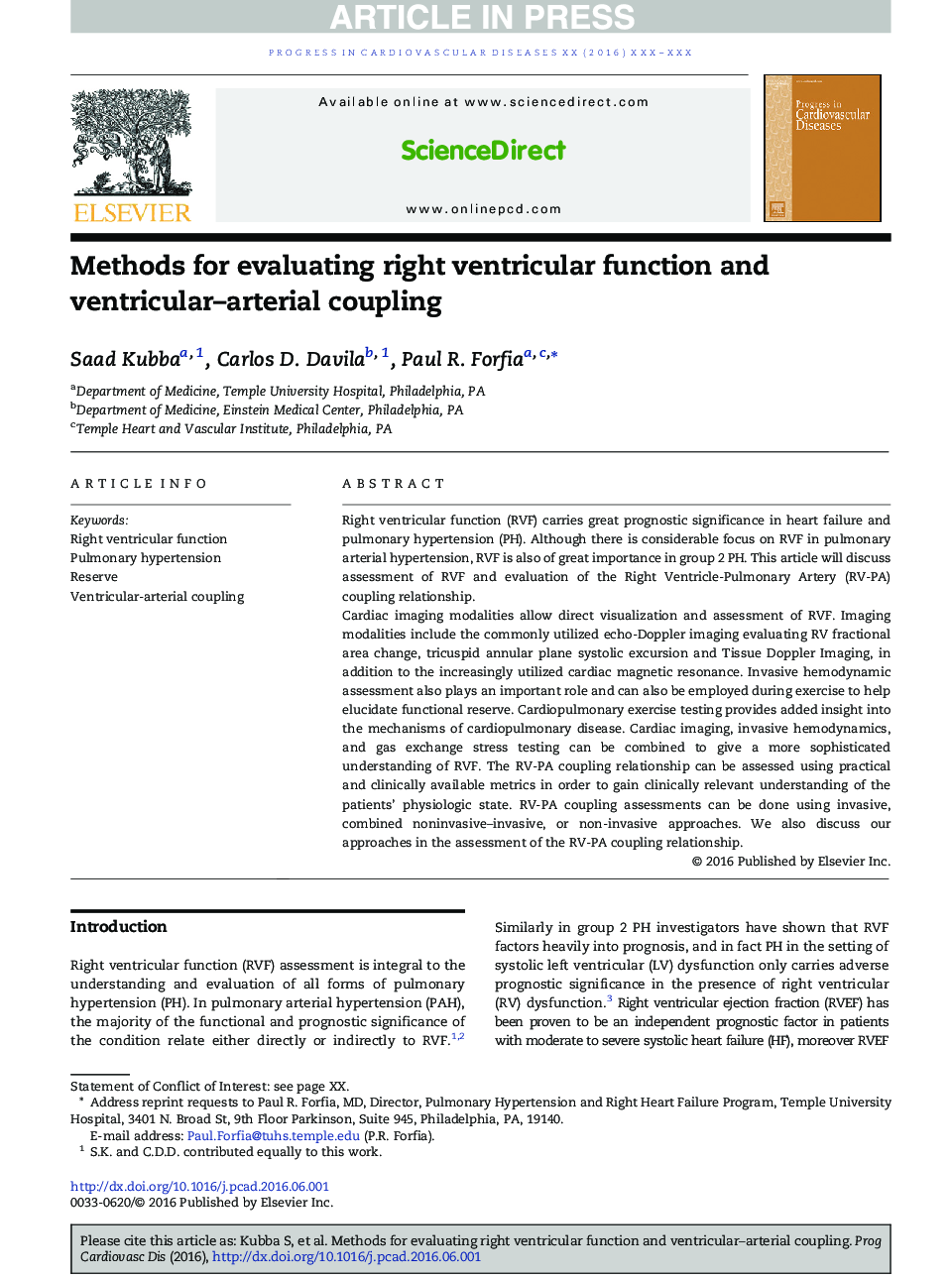| Article ID | Journal | Published Year | Pages | File Type |
|---|---|---|---|---|
| 5619662 | Progress in Cardiovascular Diseases | 2016 | 10 Pages |
Abstract
Cardiac imaging modalities allow direct visualization and assessment of RVF. Imaging modalities include the commonly utilized echo-Doppler imaging evaluating RV fractional area change, tricuspid annular plane systolic excursion and Tissue Doppler Imaging, in addition to the increasingly utilized cardiac magnetic resonance. Invasive hemodynamic assessment also plays an important role and can also be employed during exercise to help elucidate functional reserve. Cardiopulmonary exercise testing provides added insight into the mechanisms of cardiopulmonary disease. Cardiac imaging, invasive hemodynamics, and gas exchange stress testing can be combined to give a more sophisticated understanding of RVF. The RV-PA coupling relationship can be assessed using practical and clinically available metrics in order to gain clinically relevant understanding of the patients' physiologic state. RV-PA coupling assessments can be done using invasive, combined noninvasive-invasive, or non-invasive approaches. We also discuss our approaches in the assessment of the RV-PA coupling relationship.
Keywords
PAHS′RVFACHFpEFHFrEFPVRIRV-PACTEPHEmaxPCWPPASPRVOTCPETVCO2RVFTDIRAPCMRVO2LSNMSNRHCLAPSVIventricular-arterial couplingCardiac magnetic resonanceVentricular elastancearterial elastanceright ventricleleft ventricleCardiopulmonary exercise testingTissue Doppler imagingminute ventilationCarbon dioxide productionRight atriumReserveacceleration timestroke volume indexcardiac indexpulmonary vascular resistance indexPulmonary arteryPVRright ventricular functionPulmonary arterial hypertensionleft atrial pressurepulmonary artery systolic pressureRight Atrial Pressurepulmonary capillary wedge pressureChronic thromboembolic pulmonary hypertensionTAPSERight ventricular outflow tractOxygen consumptionPulmonary vascular resistanceHeart failure with preserved ejection fractionheart failureheart failure with reduced ejection fractionPulmonary hypertensionRight heart catheterizationtricuspid annular plane systolic excursion
Related Topics
Health Sciences
Medicine and Dentistry
Cardiology and Cardiovascular Medicine
Authors
Saad Kubba, Carlos D. Davila, Paul R. Forfia,
